
Kód: 02569438
Foundations of Potential Theory
Autor Oliver D. Kellogg
Chapter I. The Force of Gravity. 1. The Subject Matter of Potential Theory 2. Newton's Law 3. Interpretation of Newton's Law for Continuously Distributed Bodies 4. Forces Due to Special Bodies 5. "Material Curves, or Wires" 6. Mat ... celý popis
- Jazyk:
 Angličtina
Angličtina - Vazba: Brožovaná
- Počet stran: 400
Nakladatelství: Dover Publications Inc., 2003
- Více informací o knize

573 Kč
Dostupnost:
50 % šance Máme informaci, že by titul mohl být dostupný. Na základě vaší objednávky se ho pokusíme do 6 týdnů zajistit.
Máme informaci, že by titul mohl být dostupný. Na základě vaší objednávky se ho pokusíme do 6 týdnů zajistit.Prohledáme celý svět
Mohlo by se vám také líbit
-

Witch Hat Atelier 2
283 Kč -

Heartstopper Colouring Book
205 Kč -

Hellsing Deluxe Volume 2
1039 Kč -

Warriors: The Broken Code #2: The Silent Thaw
196 Kč -

National Geographic Traveler: Puglia
648 Kč -

How to Grow Magic Mushrooms: A 100% Guide for Beginners. Benefits of Mushroom Grower's kit
245 Kč -

Star Wars Queen's Shadow
226 Kč -

Notebook
580 Kč -

Worlds Within Worlds
323 Kč -

Persona 5, Vol. 5
184 Kč -

Morpho: Simplified Forms - Anatomy for Artists
357 Kč -

Dungeons and Desktops
1817 Kč -

Outlander's Scotland
192 Kč -

The 15 Commitments of Conscious Leadership: A New Paradigm for Sustainable Success
444 Kč -

Kumihimo Wirework Made Easy
581 Kč -

Haikyu!!, Vol. 26
228 Kč -

Land Of The Lustrous 6
326 Kč -

Sankarea Vol. 1
235 Kč -

Haikyu!!, Vol. 45
223 Kč -

Virgil Abloh - Nike ICONS
1374 Kč -

Pizazz
219 Kč -

Anne of Green Gables
143 Kč -

Watch Book Rolex
2186 Kč -

Pictures by J.R.R. Tolkien
880 Kč -

Lobster Johnson Omnibus Volume 1
917 Kč -

Lapvona
402 Kč -

American Psycho
199 Kč -

If You Could See the Sun
433 Kč -

Revenge
487 Kč -

Many Deaths of Laila Starr Deluxe Edition
617 Kč -

Rebel Moon: The Official Movie Novelization
268 Kč -

Fullmetal Alchemist: Fullmetal Edition, Vol. 1
436 Kč -

Reptile Room
223 Kč -

Race and Policing in America
1571 Kč -

Roman Historiography - An Introduction to its Basics Aspects and Development
1369 Kč -

Crush
376 Kč -

Art of John Harris: Beyond the Horizon
677 Kč -

This is Service Design Doing
938 Kč -

The Story of Philosophy
257 Kč -

Pop Manga Coloring Book
325 Kč -

These Old Shades
281 Kč -

Metaphors We Live By
364 Kč -

Berserk, Volume 6
342 Kč -

Thomas' Snowsuit
219 Kč -

Little Kids First Big Book of Dinosaurs
276 Kč -

I Love You to the Moon And Back
170 Kč -

The City of Brass
302 Kč -

Demolishing the Myth
1076 Kč -

Microservice Patterns
1215 Kč -

World Of Warcraft Chronicle Volume 3
877 Kč -

Loopin' Louie
770 Kč -

Atomic Habits
330 Kč -

The Simple Path to Wealth
693 Kč -

Beauty of Horror 1: A GOREgeous Coloring Book
388 Kč -

Sorry Not Sorry
453 Kč -

Letters to a Young Poet
68 Kč -

The Journey from Abandonment to Healing
424 Kč -

Think and Grow Rich!
514 Kč -

The Fourth Turning
393 Kč -

Auto-Katalog 2022
351 Kč -

Coloriages Mystères Disney Portraits
544 Kč -

Lwiątko biale rozciagajce się
60 Kč -

Dead Dead Demon's Dededede Destruction #1
352 Kč
Darujte tuto knihu ještě dnes
- Objednejte knihu a zvolte Zaslat jako dárek.
- Obratem obdržíte darovací poukaz na knihu, který můžete ihned předat obdarovanému.
- Knihu zašleme na adresu obdarovaného, o nic se nestaráte.
Informovat o naskladnění knihy
Zadejte do formuláře e-mailovou adresu a jakmile knihu naskladníme, zašleme vám o tom zprávu. Pohlídáme vše za vás.
Více informací o knize Foundations of Potential Theory
Nákupem získáte 57 bodů
 Anotace knihy
Anotace knihy
Chapter I. The Force of Gravity. 1. The Subject Matter of Potential Theory 2. Newton's Law 3. Interpretation of Newton's Law for Continuously Distributed Bodies 4. Forces Due to Special Bodies 5. "Material Curves, or Wires" 6. Material Surfaces or Laminas 7. Curved Laminas 8. "Ordinary Bodies, or Volume Distributions" 9. The Force at Points of the Attracting Masses 10. Legitimacy of the Amplified Statement of Newton's Law; Attraction between Bodies 11. Presence of the Couple; Centrobaric Bodies; Specific Force Chapter II. Fields of Force. 1. Fields of Force and Other Vector Fields 2. Lines of Force 3. Velocity fields 4. "Expansion, or Divergence of a Field" 5. The Divergence Theorem 6. Flux of Force; Solenoidal Fields 7. Gauss' Integral 8. Sources and Sinks 9. General Flows of Fluids; Equation of Continuity Chapter III. The Potential. 1. Work and Potential Energy 2. Equipotential Surfaces 3. Potentials of Special Distributions 4. The Potential of a Homogenous Circumference 5. Two Dimensional Problems; The Logarithmic Potential 6. Magnetic Particles 7. "Magnetic Shells, or Double Distributions" 8. Irrotational Flow 9. Stokes' Theorem 10. Flow of Heat 11. The Energy of Distributions 12. Reciprocity; Gauss' Theorem of the Arithmetic Mean Chapter IV. The Divergence Theorem. 1. Purpose of the Chapter 2. The Divergence Theorem for Normal Regions 3. First Extension Principle 4. Stokes' Theorem 5. Sets of Points 6. The Heine-Borel Theorem 7. Functions of One Variable; Regular Curves 8. Functions of Two Variables; Regular Surfaces 9. Function of Three Variables 10. Second Extension Principle; The Divergence Theorem for Regular Regions 11. Lightening of the Requirements with Respect to the Field 12. Stokes' Theorem for Regular Surfaces Chapter V. Properties of Newtonian Potentials at Points of Free Space. 1. Derivatives; Laplace's Equation 2. Development of Potentials in Series 3. Legendre Polynomials 4. Analytic Character of Newtonian Potentials 5. Spherical Harmonics 6. Development in Series of Spherical Harmonics 7. Development Valid at Great Distance 8. Behavior of Newtonian Potentials at Great Distances Chapter VI. Properties of Newtonian Potentials at Points Occupied by Masses. 1. Character of the Problem 2. Lemmas on Improper Integrals 3. The Potentials of Volume Distributions 4. Lemmas on Surfaces 5. The Potentials of Surface Distributions 6. The Potentials of Double Distributions 7. The Discontinuities of Logarithmic Potentials Chapter VII. Potentials as Solutions of Laplace's Equation; Electrostatics. 1. Electrostatics in Homogeneous Media 2. The Electrostatic Problem for a Spherical Conductor 3. General Coördinates 4. Ellipsoidal Coördinates 5. The Conductor Problem for the Ellipsoid 6. The Potential of the Solid Homogeneous Ellipsoid 7. Remarks on the Analytic Continuation of Potentials 8. Further Examples Leading to Solutions of Laplace's Equations 9. Electrostatics; Non-homogeneous Media Chapter VIII. Harmonic Functions. 1. Theorems of Uniqueness 2. Relations on the Boundary between Pairs of Harmonic Functions 3. Infinite Regions 4. Any Harmonic Function is a Newtonian Potential 5. Uniqueness of Distributins Producing a Potential 6. Further Consequences of Green's Third Identity 7. The Converse of Gauss' Theorem Chapter IX. Electric Images; Green's Function. 1. Electric Images 2. Inversion; Kelvin Tranformations 3. Green's Function 4. Poisson's Integral; Existence Theorem for the Sphere 5. Other Existence Theorems Chapter X. Sequences of Harmonic Functions. 1. Harnack's First Theorem on Convergence 2. Expansions in Spherical Harmonics 3. Series of Zonal Harmonics 4. Convergence on the Surface of the Sphere 5. The Continuation of Harmonic Functions 6. Harnack's Inequality and Second Convergence Theorem 7. Further Convergence Theorems 8. Isolated Singularities of Harmonic Functions 9. Equipotential Surfaces Chapter XI. Fundamental Existence Theorems. 1. Historical Introduction 2. Formulation of the Dirichlet and Neumann Problems in Terms of Integral Equations 3. Solution of Integral Equations for Small Values of the Parameter 4. The Resolvent 5. The Quotient Form for the Resolvent 6. Linear Dependence; Orthogonal and Biorthogonal Sets of Functions 7. The Homogeneous Integral Equations 8. The Non-homogeneous Integral Equation; Summary of Results for Continuous Kernels 9. Preliminary Study of the Kernel of Potential Theory 10. The Integral Equation with Discontinuous Kernel 11. The Characteristic Numbers of the Special Kernel 12. Solution of the Boundary Value Problems 13. Further Consideration of the Dirichlet Problem; Superharmonic and Subharmonic Functions 14. Approximation to a Given Domain by the Domains of a Nested Sequence 15. The Construction of a Sequence Defining the Solution of the Dirichlet Problem 16. Extensions; Further Propeties of U 17. Barriers 18. The Construction of Barriers 19. Capacity 20. Exceptional Points Chapter XII. The Logarithmic Potential. 1. The Relation of Logarithmic to Newtonian Potentials 2. Analytic Functions of a Complex Variable 3. The Cauchy-Riemann Differential Equations 4. Geometric Significance of the Existence of the Derivative 5. Cauchy's Integral Theorem 6. Cauchy's Integral 7. The Continuation of Analytic Function 8. Developments in Fourier Series 9. The Convergence of Fourier Series 10. Conformal Mapping 11. Green's Function for Regions of the Plane 12. Green's Function and Conformal Mapping 13. The Mapping of Polygons Bibliographical Notes Index
 Parametry knihy
Parametry knihy
Zařazení knihy Knihy v angličtině Mathematics & science Mathematics Probability & statistics
573 Kč
- Plný název: Foundations of Potential Theory
- Autor: Oliver D. Kellogg
- Jazyk:
 Angličtina
Angličtina - Vazba: Brožovaná
- Počet stran: 400
- EAN: 9780486601441
- ISBN: 0486601447
- ID: 02569438
- Nakladatelství: Dover Publications Inc.
- Hmotnost: 472 g
- Rozměry: 140 × 214 × 25 mm
- Datum vydání: 28. March 2003
Oblíbené z jiného soudku
-
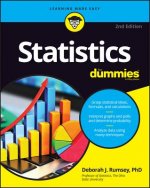
Statistics For Dummies, 2nd Edition
496 Kč -

How to Lie with Statistics
302 Kč -

Naked Statistics
386 Kč -

Elements of Statistical Learning
2200 Kč -

Theory That Would Not Die
464 Kč -

Schaum's Outline of Probability and Statistics
529 Kč -
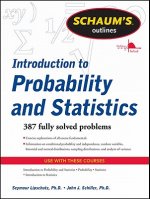
Schaum's Outline of Introduction to Probability and Statistics
652 Kč -

Statistical Analysis of Experimental Data
544 Kč -

Schaum's Outline of Probability, Random Variables, and Random Processes, Fourth Edition
576 Kč -
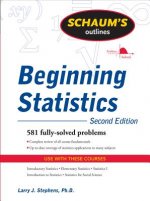
Schaum's Outline of Beginning Statistics, Second Edition
914 Kč -
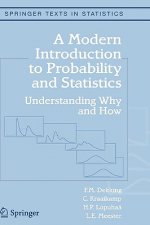
Modern Introduction to Probability and Statistics
1067 Kč -

First Course in Probability, Global Edition
2147 Kč -

Manga Guide To Regression Analysis
550 Kč -

Foundations of the Theory of Probability: Second English
342 Kč -

An Introduction to Statistical Learning
3276 Kč -

How to Lie with Statistics
299 Kč -
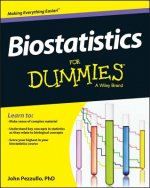
Biostatistics For Dummies
483 Kč -
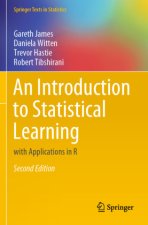
Introduction to Statistical Learning
1328 Kč -

Manga Guide To Statistics
554 Kč -

Probability Theory
223 Kč -

Pearson Edexcel International A Level Mathematics Statistics 2 Student Book
1015 Kč -

Introduction to the Practice of Statistics
2535 Kč -

Statistics for Business and Economics
2204 Kč -
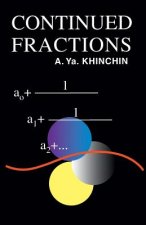
Continued Fractions
203 Kč -

Introductory Econometrics for Finance
1697 Kč -

What Is Random?
436 Kč -
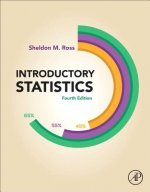
Introductory Statistics
4031 Kč -
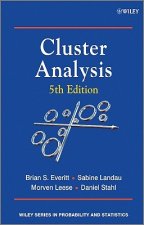
Cluster Analysis
2861 Kč -

Course in Statistics with R
3338 Kč -
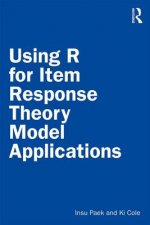
Using R for Item Response Theory Model Applications
1664 Kč -

Logic of Miracles
709 Kč -

Using Multivariate Statistics
2166 Kč -

Quantum Information Theory and Quantum Statistics
1977 Kč -

Duelling Idiots and Other Probability Puzzlers
574 Kč -

Digital Dice
528 Kč -

Cambridge International AS & A Level Mathematics Probability and Statistics 1 Student's Book
779 Kč -

Statistics Done Wrong
579 Kč -

Discovering Statistics Using R
2374 Kč -

Fifty Challenging Problems in Probability with Solutions
243 Kč -

Introduction to Probability, Second Edition
2413 Kč -
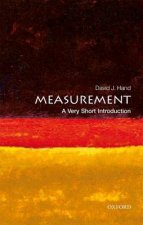
Measurement: A Very Short Introduction
282 Kč -

Statistics
1787 Kč -

Head First Statistics
884 Kč -
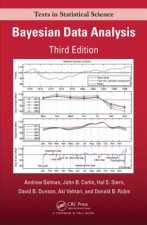
Bayesian Data Analysis
2635 Kč -

Statistics: A Very Short Introduction
249 Kč -
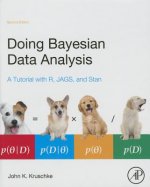
Doing Bayesian Data Analysis
2014 Kč -
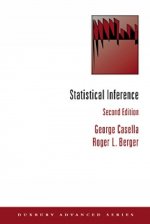
Statistical Inference
2534 Kč -
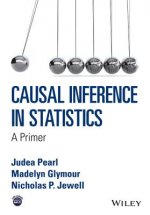
Causal Inference in Statistics - A Primer
1090 Kč -

Data Science Handbook
1341 Kč
Osobní odběr Praha, Brno a 12903 dalších
Copyright ©2008-24 nejlevnejsi-knihy.cz Všechna práva vyhrazenaSoukromíCookies


 Vrácení do měsíce
Vrácení do měsíce 571 999 099 (8-15.30h)
571 999 099 (8-15.30h)